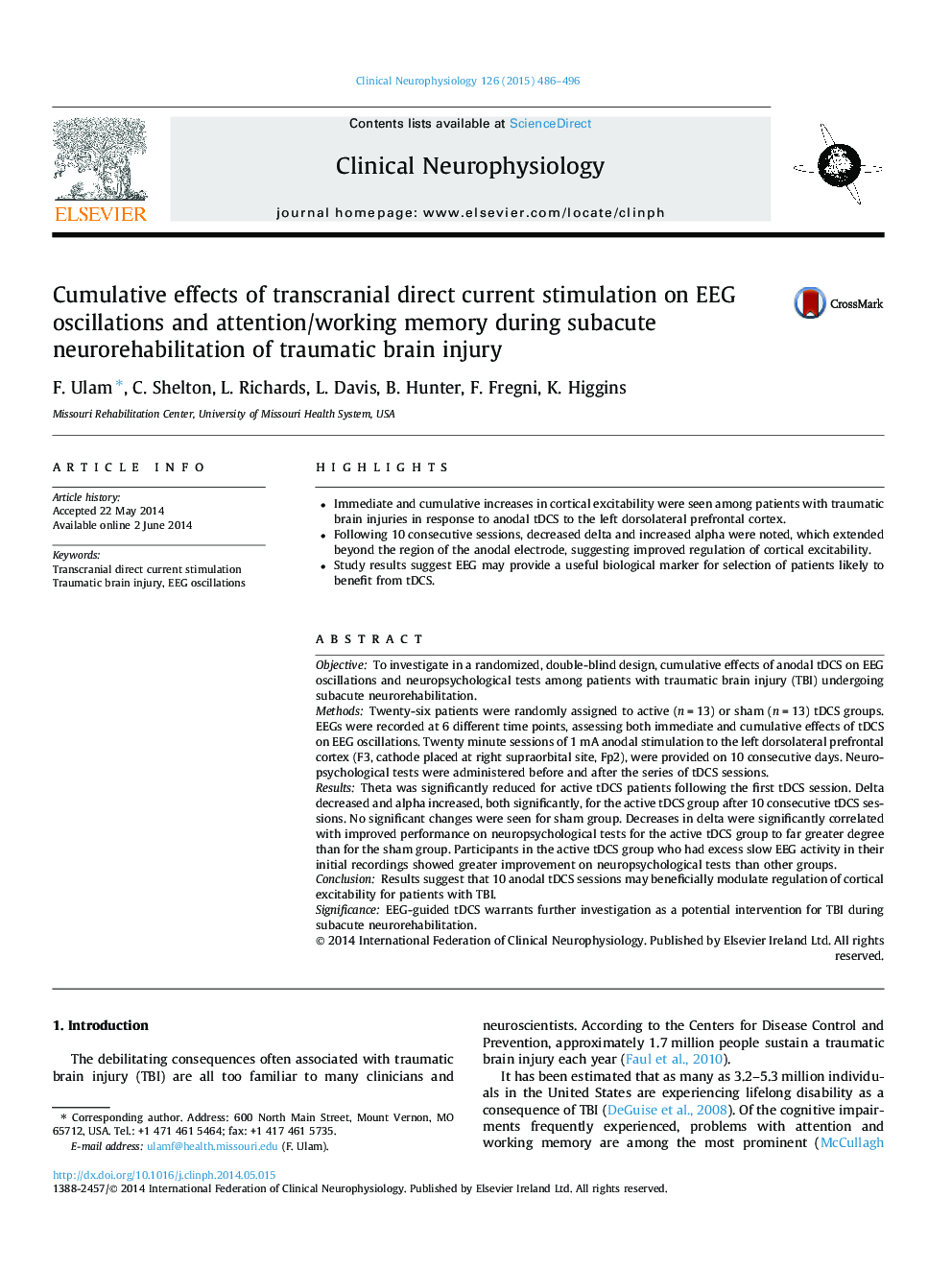| Article ID | Journal | Published Year | Pages | File Type |
|---|---|---|---|---|
| 3043708 | Clinical Neurophysiology | 2015 | 11 Pages |
•Immediate and cumulative increases in cortical excitability were seen among patients with traumatic brain injuries in response to anodal tDCS to the left dorsolateral prefrontal cortex.•Following 10 consecutive sessions, decreased delta and increased alpha were noted, which extended beyond the region of the anodal electrode, suggesting improved regulation of cortical excitability.•Study results suggest EEG may provide a useful biological marker for selection of patients likely to benefit from tDCS.
ObjectiveTo investigate in a randomized, double-blind design, cumulative effects of anodal tDCS on EEG oscillations and neuropsychological tests among patients with traumatic brain injury (TBI) undergoing subacute neurorehabilitation.MethodsTwenty-six patients were randomly assigned to active (n = 13) or sham (n = 13) tDCS groups. EEGs were recorded at 6 different time points, assessing both immediate and cumulative effects of tDCS on EEG oscillations. Twenty minute sessions of 1 mA anodal stimulation to the left dorsolateral prefrontal cortex (F3, cathode placed at right supraorbital site, Fp2), were provided on 10 consecutive days. Neuropsychological tests were administered before and after the series of tDCS sessions.ResultsTheta was significantly reduced for active tDCS patients following the first tDCS session. Delta decreased and alpha increased, both significantly, for the active tDCS group after 10 consecutive tDCS sessions. No significant changes were seen for sham group. Decreases in delta were significantly correlated with improved performance on neuropsychological tests for the active tDCS group to far greater degree than for the sham group. Participants in the active tDCS group who had excess slow EEG activity in their initial recordings showed greater improvement on neuropsychological tests than other groups.ConclusionResults suggest that 10 anodal tDCS sessions may beneficially modulate regulation of cortical excitability for patients with TBI.SignificanceEEG-guided tDCS warrants further investigation as a potential intervention for TBI during subacute neurorehabilitation.
